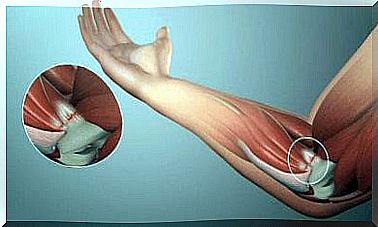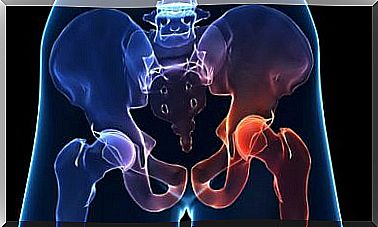Discover The Most Common Parasites In Food

The parasites in food consist of several microorganisms that can pose a risk to human health.
They are ingested through the diet and have the ability to colonize some parts of the intestinal tract or generate harmful toxins. It is important to know which are the most common and to be aware of the necessary measures to avoid intake.
It is worth noting that food poisoning is one of the most common reasons why people visit the emergency room. This situation is usually the result of poor hygiene practices, which end up ingesting pathogens that can cause indigestion.
However, some of them can develop allergic processes and affect other vital organs, such as the liver. What other dangers do they pose?
The danger of parasites in food
On many occasions, people ingest parasites without being aware of their presence in the food since they are so small. It is also possible that the product only contains the eggs of the pathogen, which will hatch in the intestinal tract and cause short-term damage.
This is perhaps one of the most complicated cases to treat since the parasite settles in the patient and causes a constant health problem. It is important to note that this type of organism can develop in very varied foods. They can appear in fresh products, but also canned foods.
It is relatively common to find them in meat that has not undergone proper treatment. We can also find them in some types of fish. Once they have developed in the body, they can spread through contact, especially if there is poor hand hygiene.

The most common parasites in food
An article published in Advances in Food and Nutrition Research states that food-borne parasites are one of the most neglected groups of pathogens. This is due to the complexity and high prevalence among marginalized populations. In recent years, however, they have spread to other population groups and have caused unexpected symptoms.
What are the most common parasites in food? How can you reduce the risk of pollution? It is very important to answer these questions, so we will provide more information below.
Taenia solium
This parasite is also known as ” pig tapeworm “. It is a microorganism we usually find in pigs that have not undergone proper treatment or disinfection during the process that takes place at the slaughterhouse.
As a result of ingesting contaminated food, the tapeworm can develop in the intestine. they have a soil-like appearance and have the ability to absorb the nutrients we eat through the diet.
According to a study published in the journal Parasite Immunology , this can cause progressive weight loss in humans. This, of course, leads to a subsequent state of malnutrition.
Echinococcus granulosus
This is usually a parasite that lives in the intestines of dogs. However, research has shown that it can also spread to humans by consuming contaminated meat from other animals, such as pigs.
It is still a tapeworm-shaped organism, although it is small in size. It causes a protein intake that reduces the bioavailability of amino acids for human use. As a consequence, it significantly harms health.
Toxoplasma gondii
This protozoan can cause toxoplasmosis in humans. It is a microorganism that mainly resides in cats, although the transition to pregnant women generates negative consequences for the fetus.
The treatment of toxoplasmosis requires a number of drugs that are able to act on the synthesis of folic acid. The treatment thus has a negative impact on the parasite’s life and reproductive cycle.
Regarding the clinical picture of toxoplasmosis, cold-like symptoms such as fever stand out. This disease can even be fatal to individuals with weakened immune systems.
However, some studies suggest that infections with this pathogen may increase the risk of developing schizophrenia in the medium term.
Strategies to reduce the risk
One of the most effective mechanisms to reduce the risk of developing a foodborne parasite infection is to take extreme food hygiene measures. In this sense , it is crucial to perform proper washing of fresh consumer products, with the exception of meat products.
It is also important to make sure that you achieve a high internal temperature in the foods when you prepare them. This is because it is an effective mechanism for eradicating pathogens that may be inside the food.
At the same time , you should never use the same utensils to handle raw and cooked foods. It is also important to disinfect cutlery optimally, as well as to wash your hands before and after handling food.
In case of exposing the food to a freezing process, you should always thaw it in the refrigerator afterwards and avoid leaving the product at room temperature. This can promote the hatching of eggs that are inside the food or on the surface.

Watch out for the parasites in food
Getting an infection caused by food parasites is relatively common, and it is a problem that can have a serious effect on human health. Not only does it affect the metabolism of nutrients or the availability of nutrients, it can also lead to liver damage or cause a life-threatening hypersensitivity reaction.
Furthermore, in the case of pregnant women, certain infections are very dangerous as they can endanger the health of the fetus. In that sense, we recommend that you always obtain food of the highest quality, which has passed sanitary inspections and has the correct certification.
At the same time, you must prepare the food completely to make sure that all pathogens inside are completely destroyed. When preserving products, use methods that are safe and that manage to keep the food in good condition to prevent the reproduction of parasites.









